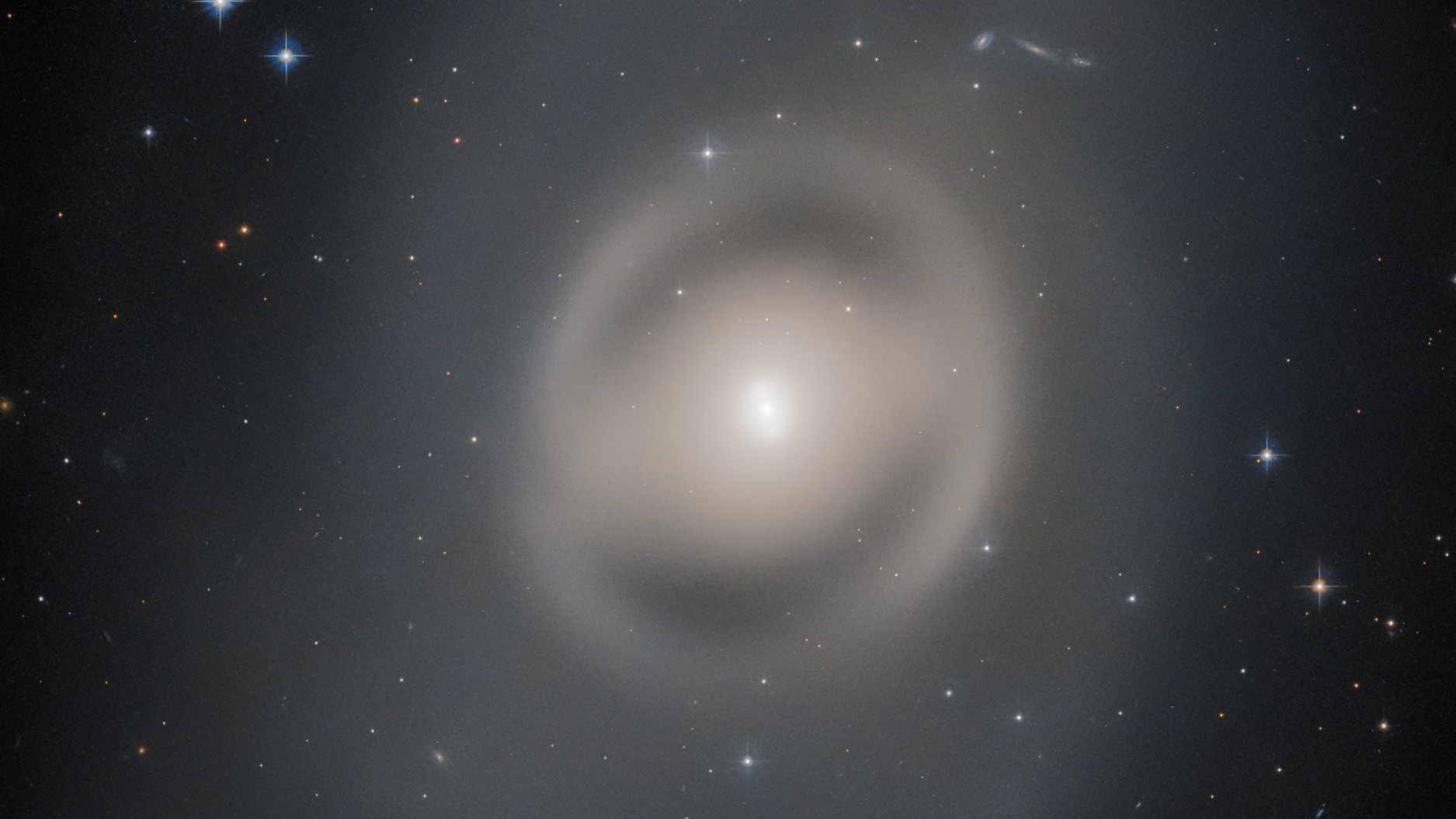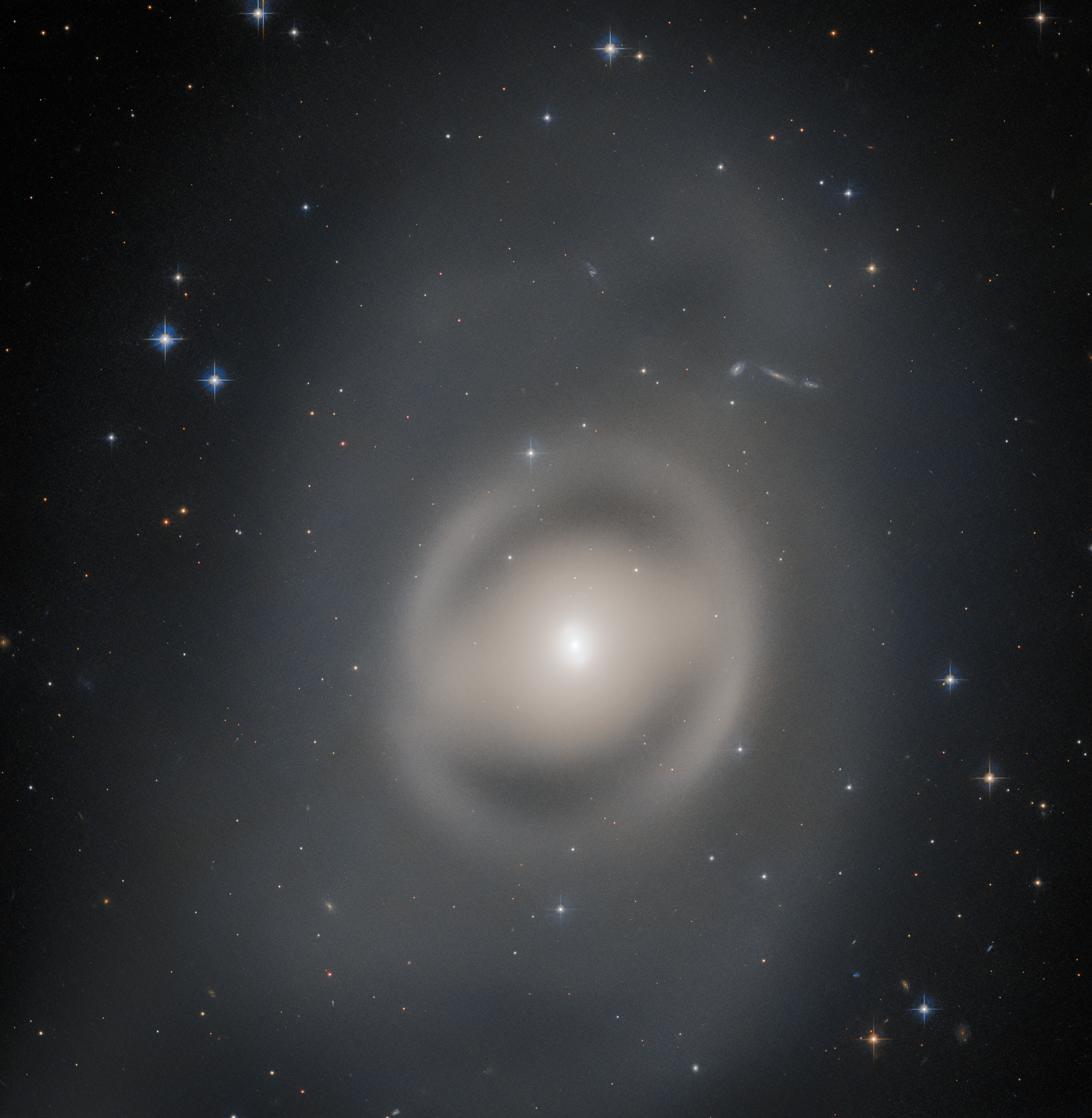Space photo of the week: A cosmic 'ghost' peers through the universe's past
Imaged beautifully by Hubble, NGC 6684 is a 'lenticular' galaxy very different to our own Milky Way.

What is it?
NGC 6684, a lenticular galaxy.
Where is it?
About 44 million light-years away, in the constellation Pavo (the "peacock").
Why's it so special?
This image from the Hubble Space Telescope reveals a distant galaxy that looks very different from our own Milky Way. Best seen from the Southern Hemisphere, NGC 6684 is a whopping 44 million light-years away and was spotted coincidentally during Hubble's census of galaxies within 32.6 million light-years that it's yet to image. It's now about three-quarters of its way through this mammoth task.
Astronomers categorize galaxies based on their apparent shapes and physical features. NGC 6684's hazy, ghostly shape is an example of a specific type of galaxy called a lenticular galaxy — meaning that when viewed side-on, it looks like a lens, according to NASA.
It differs from the Milky Way in how its stars are arranged. The Milky Way is a classic spiral galaxy — a rotating disk of spiral arms full of stars, with dark lanes of dust and empty space between them that orbit around a central bulge of stars. Lenticular galaxies like NGC 6684 still have a bulge of stars at their core but no spiral arms. Instead, there's a disk of stars.
Lenticular galaxies contain older stars than spiral galaxies do, and astronomers think these galaxies could be aging spiral galaxies whose arms have faded, or spiral galaxies that have merged, according to NASA. Indeed, recent evidence suggests that the Milky Way may have been a lenticular galaxy billions of years ago, before a series of galactic collisions shaped its signature spiral arms. Other lenticular galaxies imaged by Hubble recently include NGC 1023, NGC 5283 and NGC 3489.

Can you see it in the night sky?
Although NGC 6684 is far too small to see with backyard telescopes or binoculars, it will soon be possible to see one galaxy very easily. Go outside after dark in late September and early October, according to EarthSky, and you can search for the Andromeda galaxy in the eastern sky. Also called M31, Andromeda is the closest major galaxy to the Milky Way and is another spiral galaxy. Found near the Andromeda and Cassiopeia constellations, it's visible to the naked eye in very dark skies (and in stargazing binoculars from almost anywhere) as a whitish nebulous cloud.
For the very best view of Andromeda, skywatchers are advised to wait another 4 billion years or so; that’s when astronomers estimate Andromeda will collide with the Milky Way, merging the two galaxies forevermore.
Sign up for the Live Science daily newsletter now
Get the world’s most fascinating discoveries delivered straight to your inbox.

Jamie Carter is a freelance journalist and regular Live Science contributor based in Cardiff, U.K. He is the author of A Stargazing Program For Beginners and lectures on astronomy and the natural world. Jamie regularly writes for Space.com, TechRadar.com, Forbes Science, BBC Wildlife magazine and Scientific American, and many others. He edits WhenIsTheNextEclipse.com.










